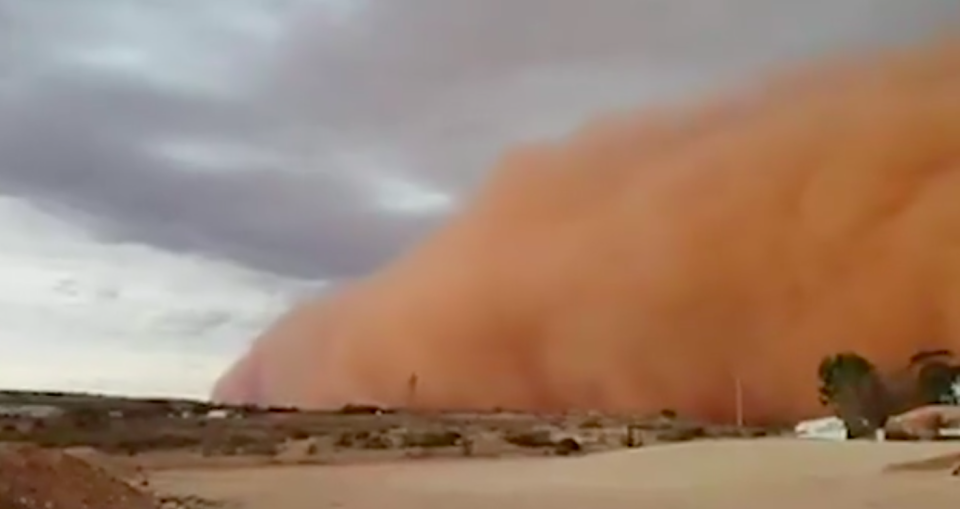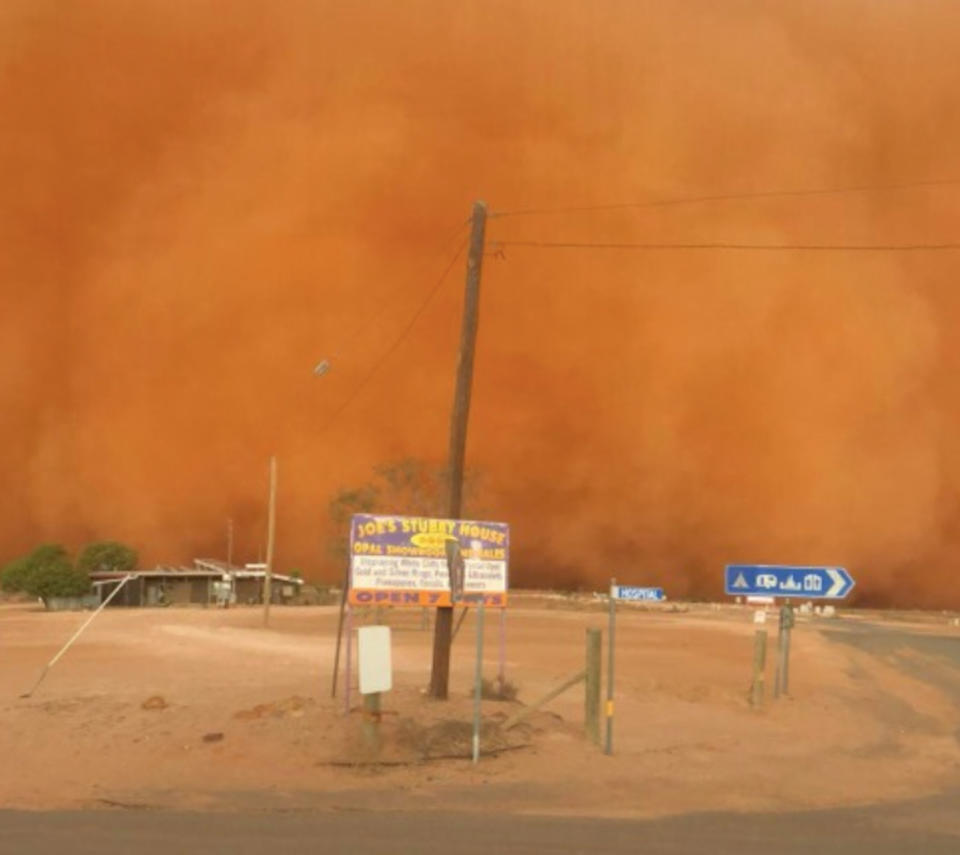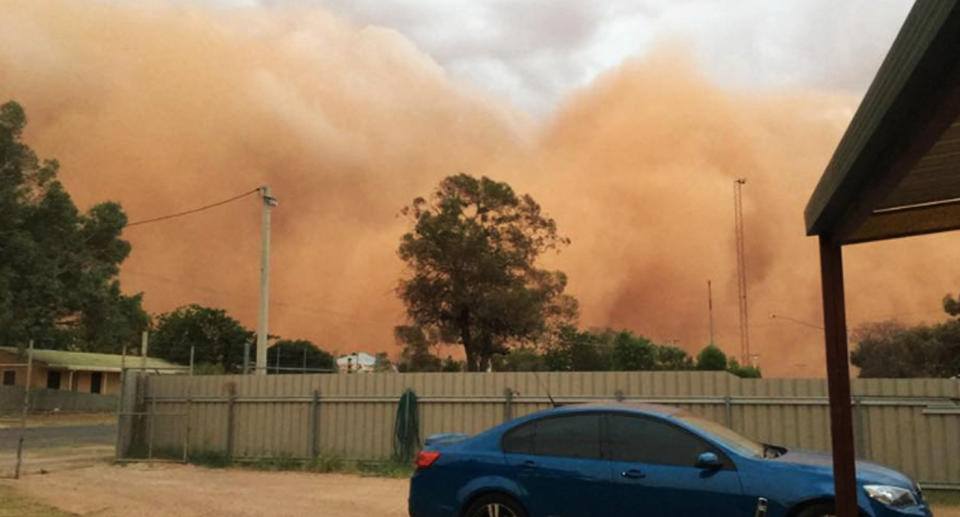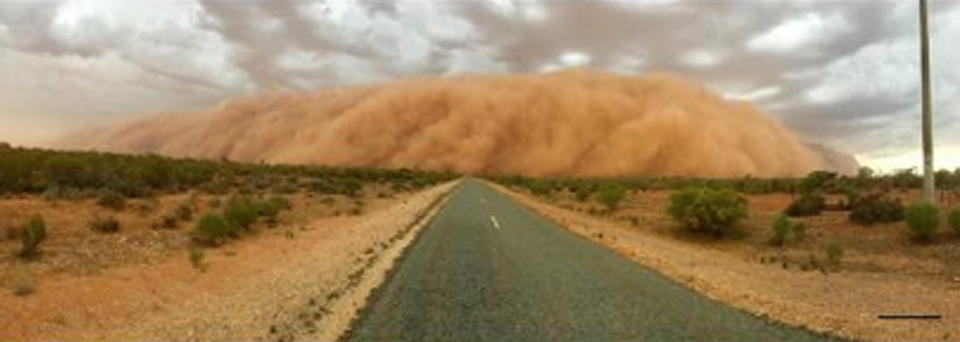Massive dust cloud engulfs towns across outback NSW
There were apocalyptic scenes in western NSW on Tuesday when a giant dust cloud swept across the region.
Several amazed residents took to social media to document the terrifying experience as dozens of towns succumbed to the aftermath of a thunderstorm.
Remarkable footage captured by White Cliffs resident Bradley Atkins reveals the gargantuan orange mass slowly edge towards his home in the remote mining town.


“Get inside, shut the door!” he can be heard telling family members.
The giant wall of orange creeps over the roofs of neighbouring houses as the sky begins to darken.
The thick cloud suddenly reduces visibility to just several metres amid the dark brown surroundings.
Residents reflect on rare phenomenon
The manager of White Cliffs Hotel, Olivia Probyn, told Yahoo7 News she’d never come across a phenomenon as spectacular.
“It was something I’ve never seen before. Seeing that yesterday was unbelievable!” she said.

“It looked amazing and as it got closer and closer you could see it changing colours with it picking up the dirt and rolling over town.”
While the cloud was daunting to many, she revealed several braver residents were ready to take it on.
“There were people out on the road in front of the pub watching and waiting to greet the storm, I was surprised how many people stayed outside with the strong winds!” she said.
She said the whole town was blacked out from the cloud as wind speeds surpassed 110km/h.

“That’s when I though now we are in trouble!” she said, before describing the aftermath as “a mess”.
Nearby resident Shirley Ronayne in Wilcannia said her house began shaking as the cloud took hold of the region.
“Standing there watching this big dust cloud rolling towards you and not knowing what’s was going to happen once it hit was terrifying but also exciting,” she told Yahoo7 News.
“Everything was so calm and then all of a sudden the winds picked up and myself and my three-year-old daughter were chasing our clothes around the back yard right before it.”
Thunderstorm to blame
The freak cloud was the result of a storm front which swept across NSW on Tuesday, prompting health authorities to warn the conditions could trigger serious breathing problems in some people.
Following a dry year for the state, the resulting thunderstorm whipped up the surrounding dirt and soil and transported it in a huge mass through the air.

NSW Health’s Richard Broome said high levels of pollen in the air could trigger asthma and respiratory conditions as the storms approach.
“Thunderstorms cause pollen grains to explode and release fine particles which can be inhaled deeply into the lungs, causing even more people to wheeze and sneeze,” Dr Broome said in a statement on Tuesday.
The warnings come after 3600 people presented to hospitals in Melbourne with breathing problems following storms in 2016.
At least nine deaths were linked to the event.
Sydney has never recorded a thunderstorm asthma event of a similar magnitude but rural NSW has, and the health department is urging sensitive people to be extra vigilant.
“Anyone with diagnosed asthma should carry their asthma medication with them at all times during this high-risk period,” Dr Broome said.
with AAP



